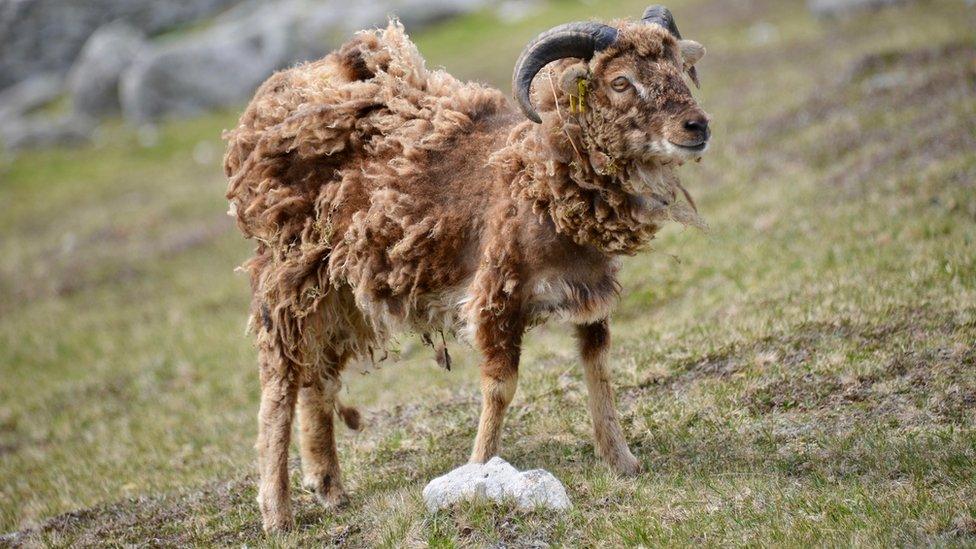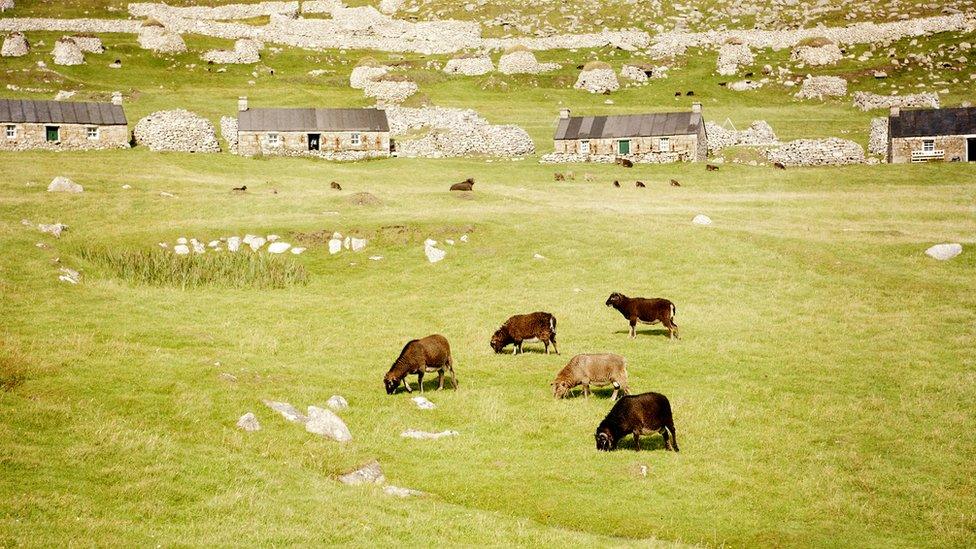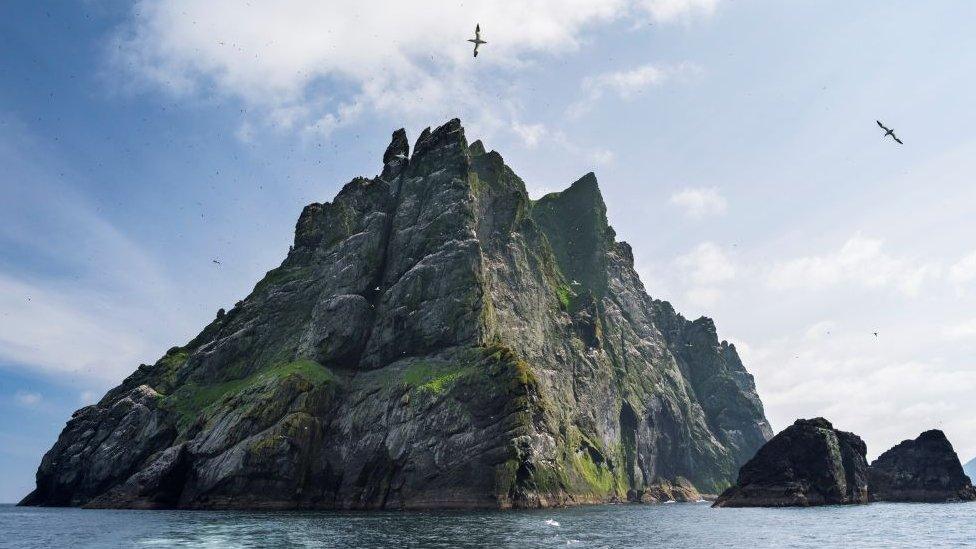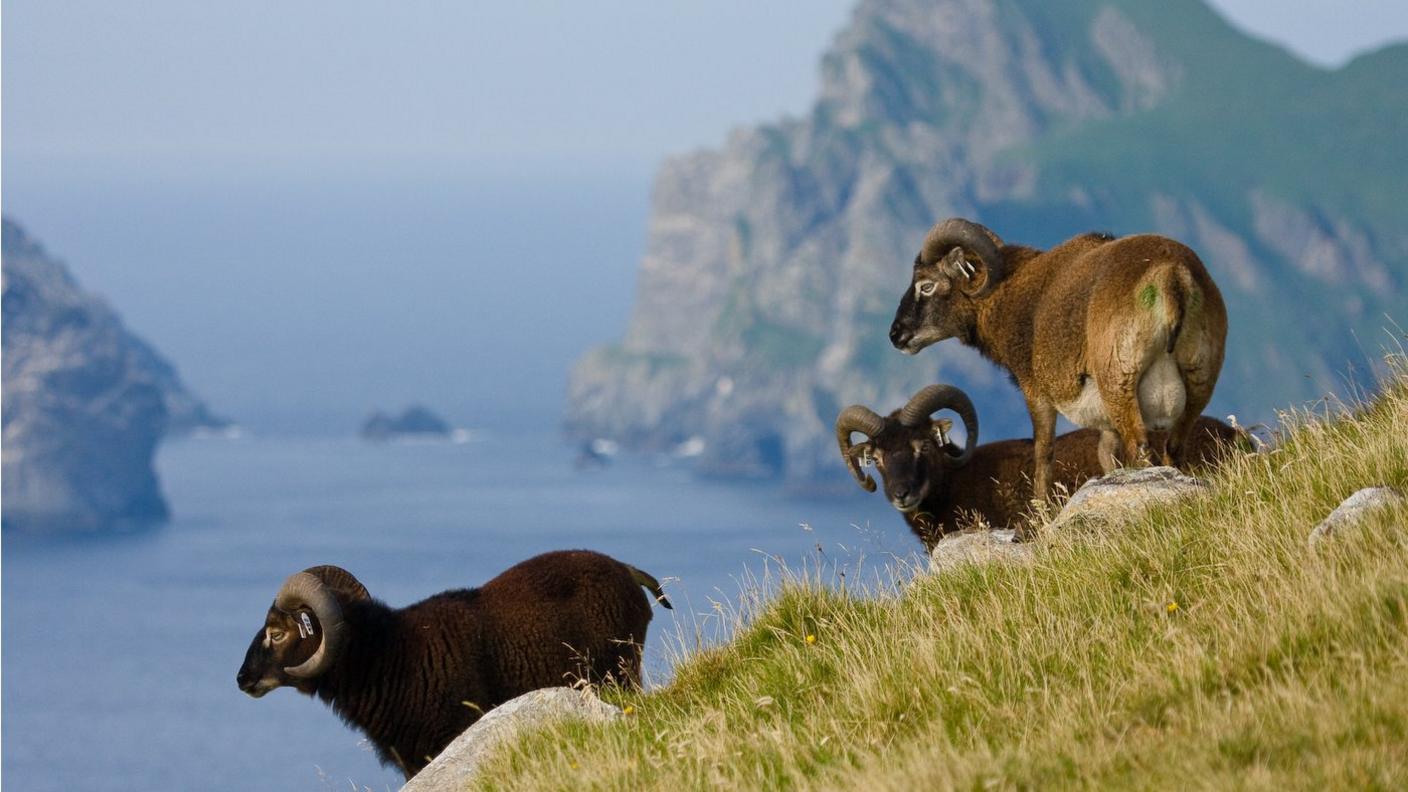Starving sheep on St Kilda need help, say Western Isles vets
- Published

The Scottish government said the sheep were treated in the same way as wild deer
Wild sheep on St Kilda have been left to starve to death, say island vets.
They have raised a petition urging action from the Scottish government and the National Trust for Scotland (NTS) - which helps to manage the uninhabited archipelago off the west of Scotland.
The two vets said the number of animals outstripped the available grazing.
NTS said the animals were related to ancient wild sheep and were treated as feral, so there was a presumption against intervention.
And the Scottish government said St Kilda's sheep were similar to wild deer in that they were unowned and unmanaged.
But Western Isles-based vets David Buckland and Graham Charlesworth argue the animals were managed in some way for thousands of years until the last islanders abandoned St Kilda in 1930.
Mr Buckland, who has worked in Uist and Barra for more than 40 years, described the sheep as domestic animals left to live in a "wild state".
He said: "It is the manner of their dying that vets are concerned with. I think starvation is a very bad death."
Mr Buckland said scientific monitoring of populations on St Kilda's islands of Hirta, Boreray and Soay suggested sheep had been dying from starvation on a regular basis for years.
He added: "For the last six years we have been trying to persuade NTS and Scottish government to take measures to reduce the starvation and improve welfare of sheep, but have got nowhere."

NTS said it took its responsibilities relating to animal welfare seriously and always followed relevant legislation.
A spokeswoman said: "The Soay sheep are an important part of the St Kilda archipelago's heritage, and originate from the population on the island of Soay where they were treated as a wild population for hundreds of years, unmanaged save for periodic hunting by the archipelago's inhabitants.
"The sheep will continue to be treated as feral animals with a presumption against intervention, except in exceptional circumstances, such as a serious outbreak of disease that threatens the sheep populations."
NTS said it had been in long-running communication with the vets regarding the management and welfare of the sheep.
The spokeswoman added: "We will continue to comply with Scottish government legislation relating to St Kilda's sheep populations and are happy to contribute to any review it decides to undertake."

Feral Soay sheep on St Kilda's main island of Hirta
The Scottish government said the history of the sheep meant they were not considered to be a species that was commonly domesticated within the British Islands.
A spokesman said: "This means that provisions contained within the Animal Health and Welfare Act 2006 would not apply. This has been the consistent position of the Scottish government for many years."
He added: "We recognise that within any wild population of animals in Scotland there will be different challenges from year to year which may impact population numbers.
"For the St Kilda sheep the harsher climatic conditions of the winter months can unfortunately lead to increased natural deaths among the population."
The St Kilda Soay Sheep project, which has been studying the animals since 1985 said the sheep had been evolving to their environment for hundreds of years. It said the deaths over winter were potentially comparable with other wildlife in Scotland.
A spokesman said: "There is no evidence whatsoever Soay sheep on St Kilda suffer more or differently than other wild populations experiencing harsh Hebridean winters."
St Kilda is a group of small islands and rocky sea stacks more than 40 miles (64km) west of the Western Isles.
The main island of Hirta is inhabited but only on a temporary basis by visiting NTS workers, scientists and also contractors who work at small Ministry of Defence site.
- Published9 February 2021

- Published8 July 2015
